
Treat cracked nails with the care they deserve to keep them healthy and beautiful.
Cracked nails are a common issue, often caused by everyday factors such as excessive dryness, frequent exposure to water, or harsh chemicals. Additionally, they can result from underlying health conditions or nutritional deficiencies. Although they might seem like a minor inconvenience at first, untreated cracks can gradually worsen over time, leading to pain, infections, or further nail damage. Therefore, addressing cracked nails promptly not only restores their appearance but also strengthens and protects them for the future.
Understanding Cracked Nails
What Causes Cracked Nails?
Cracked nails can result from various factors that weaken their structure over time.
- Environmental Factors: Prolonged exposure to water, harsh chemicals, or dry conditions can strip nails of their natural moisture, making them brittle and prone to cracking.
- Nutritional Deficiencies: A lack of essential nutrients like biotin, vitamin E, or iron can weaken nails, reducing their flexibility and increasing the likelihood of cracks.
- Improper Nail Care or Product Use: Over-filing, the use of low-quality nail products, or skipping a protective base coat during manicures can contribute to damage.
- Health Conditions: Certain medical conditions, such as hypothyroidism or psoriasis, can weaken nails or cause them to crack as part of their symptoms.
Understanding these causes can help prevent cracked nails and guide appropriate treatment strategies.

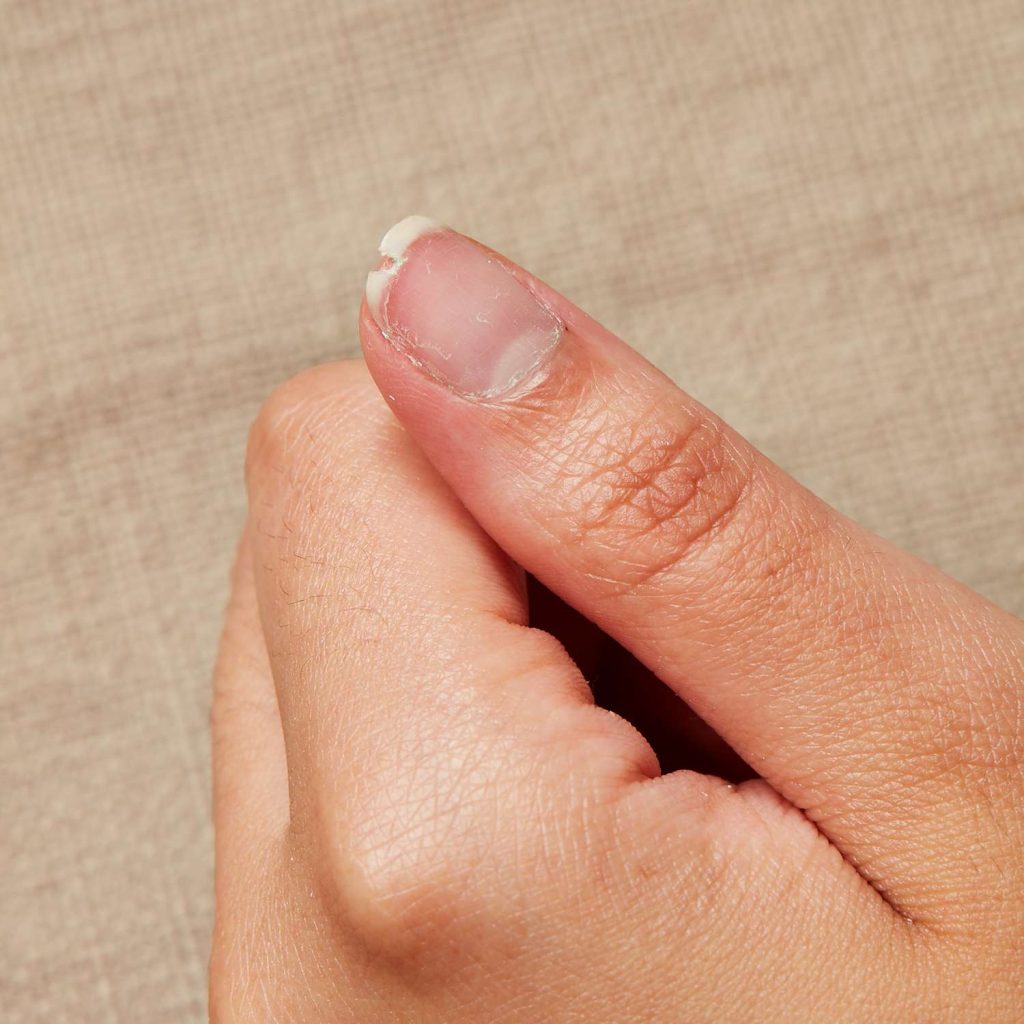
How to Identify Different Types of Nail Cracks
Recognizing the type and severity of cracks is crucial to determine the best course of action.
- Surface Cracks vs. Full Splits: Surface cracks typically appear as minor lines or chips on the nail, often caused by external stress or dryness. In contrast, full splits run deeper and may extend across the entire nail plate, often requiring more intensive care.
- Severity Indicators: Minor cracks that don’t affect the nail’s structure can often be treated at home with proper care and hydration. However, severe cracks accompanied by pain, discoloration, or signs of infection may necessitate professional help from a nail technician or dermatologist.
By identifying the type of crack early, you can take the appropriate steps to repair and prevent further damage.
At-Home Remedies for Treating Cracked Nails
Addressing cracked nails at home requires a combination of hydration, temporary fixes, and strengthening treatments to restore their health and appearance. By incorporating the right products and techniques, you can effectively treat cracked nails and prevent further damage.
Moisturizing and Hydration
Proper hydration is essential to treat cracked nails and prevent brittleness. Begin by applying cuticle oils or creams rich in vitamins and nutrients. Products like CND SolarOil™ or OPI ProSpa Nail & Cuticle Oil are specifically designed to deeply nourish nails and cuticles, helping to restore flexibility and strength.
For a natural approach, consider DIY remedies like soaking your nails in warm coconut oil or olive oil for 10–15 minutes. These oils penetrate deeply into the nail plate, providing much-needed hydration and promoting repair. Regular use of these treatments can significantly reduce the likelihood of cracks reappearing.
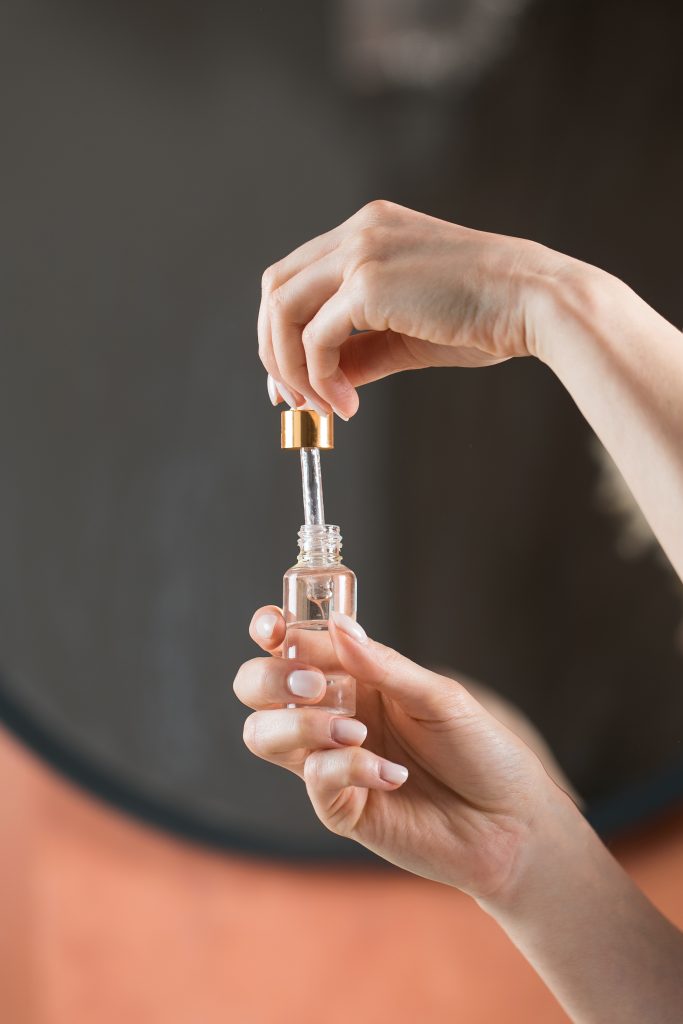
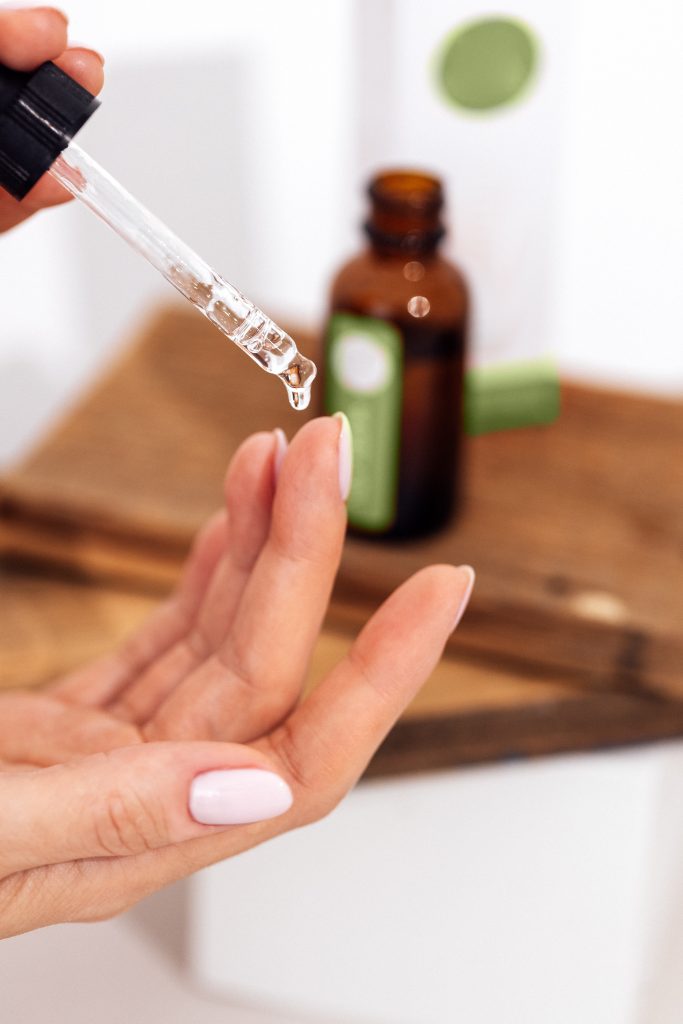
Temporary Fixes for Cracked Nails
When cracks occur, temporary fixes can provide immediate relief and protect the nail while it heals. For minor cracks, applying nail glue or a layer of clear polish, such as Gelish Foundation Base Coat, can seal the damaged area and prevent it from worsening.
For more advanced reinforcement, the silk wrap or tea bag method is highly effective. This involves placing a small piece of silk fabric or a tea bag over the crack and securing it with a layer of polish or glue. Brands like Entity One Gel Technology offer professional-grade repair kits that are ideal for this purpose, ensuring a smooth and long-lasting finish.
Strengthening Treatments
To prevent future cracks and enhance nail resilience, incorporate strengthening treatments into your routine. Over-the-counter options, such as OPI Nail Envy or CND RescueRXx™, deliver powerful ingredients that repair and fortify damaged nails. These treatments not only treat cracked nails but also help maintain their strength over time.
For those who prefer DIY solutions, a protein-rich nail mask made from egg whites and milk can work wonders. The proteins and calcium in these ingredients help rebuild the nail structure naturally, complementing professional-strengthening products like Gelish Vitagel Recovery for added protection.
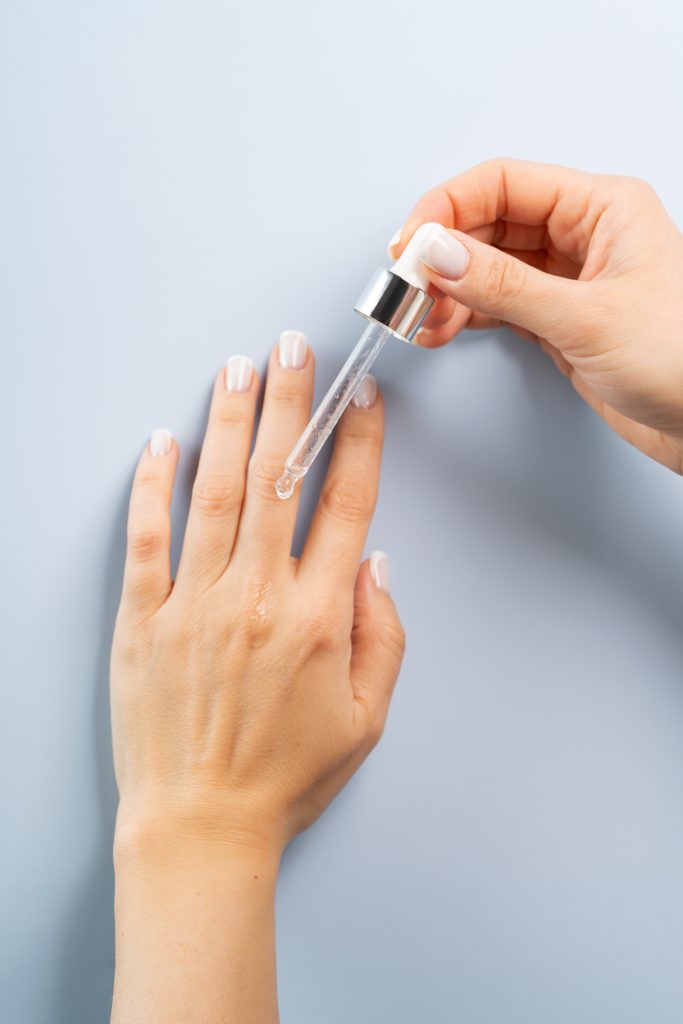
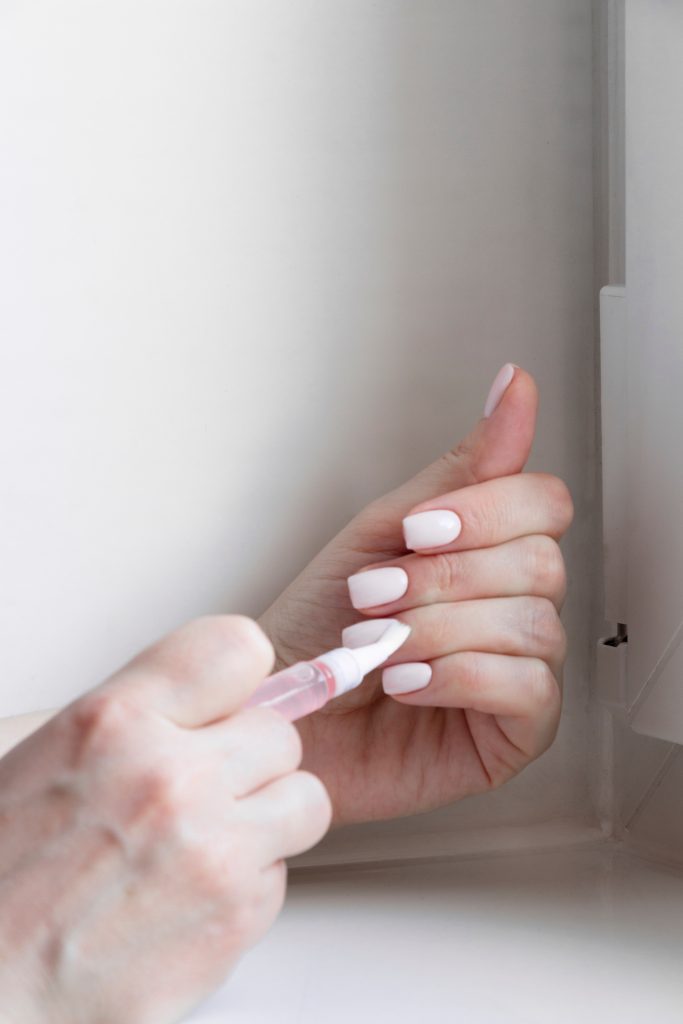
Preventive Measures for Healthy Nails
- Apply nourishing cuticle oils like CND SolarOil or OPI ProSpa Nail & Cuticle Oil to prevent dryness.
- Wear gloves when handling harsh chemicals.
- Eat foods rich in biotin, vitamin E, and omega-3 fatty acids to strengthen nails.
- Trim and file nails regularly to avoid splits.
- Use acetone-free removers and quality polishes like OPI Infinite Shine or CND VINYLUX.
- Minimize prolonged water exposure and dry hands thoroughly.
- Take breaks between acrylic or gel nail applications.
- Avoid using nails as tools to prevent damage.
- Buff gently and avoid peeling off gel or polish.
- Stay hydrated to keep nails and skin healthy.
- Use strengthening products like OPI Nail Envy or Gelish Vitagel Strength.
- Watch for changes in nail health and consult a professional if needed.
DIY Nail Care Routines
- Step 1: Remove Old Polish
Use an acetone-free nail polish remover to gently clean your nails without drying them out. - Step 2: Trim and Shape Nails
Trim nails to your preferred length, then file them with a fine-grit file to shape and smooth edges. - Step 3: Soak and Hydrate
Soak nails in warm water with a few drops of olive or coconut oil for 5–10 minutes to soften cuticles. - Step 4: Care for Cuticles
Push back cuticles gently with a cuticle pusher and apply cuticle oil, such as CND SolarOil™, for hydration. - Step 5: Buff Nails
Lightly buff nails to smooth ridges and enhance natural shine without overdoing it to prevent thinning. - Step 6: Apply Strengthener
Use a nail strengthener like OPI Nail Envy or Gelish Vitagel Strength to fortify nails. - Step 7: Moisturize Hands and Nails
Finish with a rich hand cream and massage it into your hands and nails for added hydration.
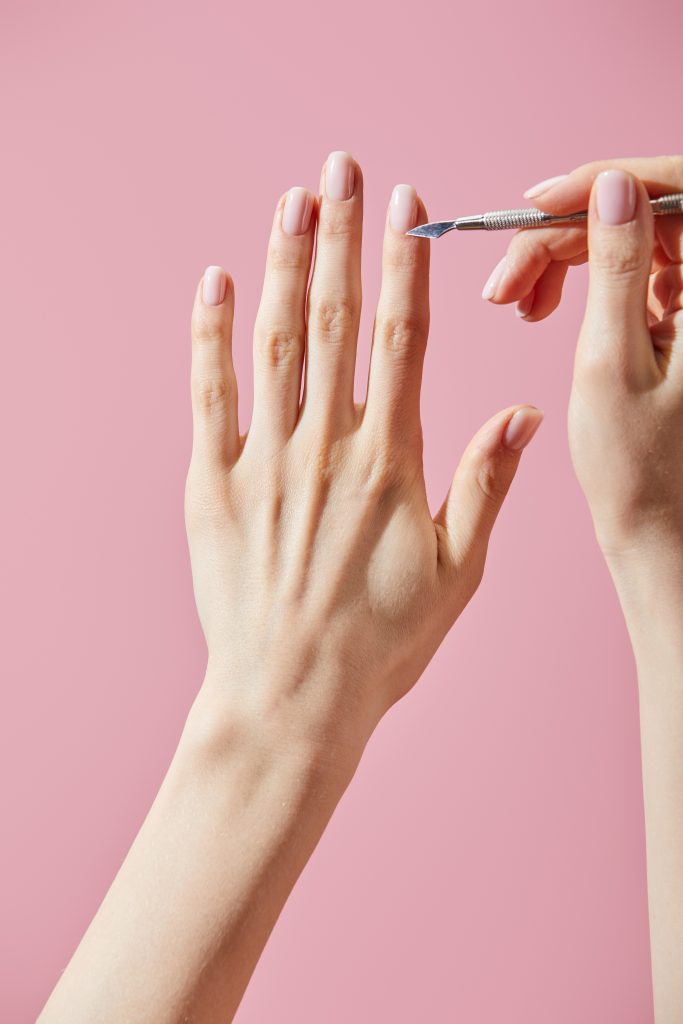
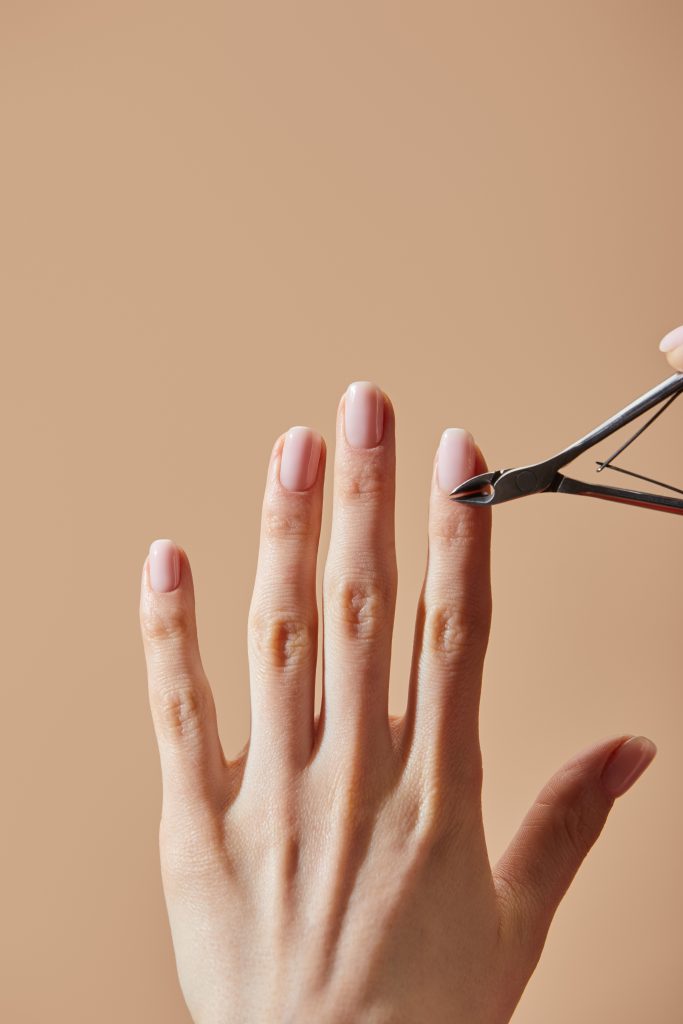
Tools and Products to Include in Your Nail Care Kit
- Nail Clippers: For trimming nails evenly.
- Fine-Grit Nail File: For shaping and smoothing edges.
- Cuticle Pusher: To gently push back cuticles.
- Buffing Block: For smoothing and adding natural shine.
- Cuticle Oil: Options like CND SolarOil™ or OPI ProSpa Nail & Cuticle Oil.
- Hand Cream: To keep hands and nails moisturized.
- Nail Strengthener: Products such as OPI Nail Envy or Gelish Vitagel Strength.
- Acetone-Free Remover: To remove polish without causing dryness.
- Soaking Bowl: For softening nails and cuticles.
FAQ
What are the most common causes of cracked nails?
Cracked nails can result from environmental factors like dryness and frequent exposure to water, as well as nutritional deficiencies such as low biotin or vitamin E levels. Additionally, improper nail care or health conditions like hypothyroidism may contribute. Understanding the causes is the first step to effectively treat cracked nails and prevent them from recurring.
How can I prevent cracked nails in the future?
Preventing cracked nails involves consistent care. Regularly moisturize with cuticle oil, avoid excessive exposure to water, and use gloves while performing household chores. These steps will not only help prevent but also treat cracked nails if minor issues arise.
How long does it take to treat cracked nails completely?
The healing process depends on the severity of the crack. Minor cracks can improve within a week or two with proper care, while deeper ones may take longer and benefit from professional intervention to fully treat cracked nails.
Are DIY remedies effective for treating cracked nails?
DIY remedies like oil soaks, nail glue, or the tea bag method are safe and effective ways to treat cracked nails at home. However, for deeper cracks, professional-grade products or expert assistance may be more suitable.

